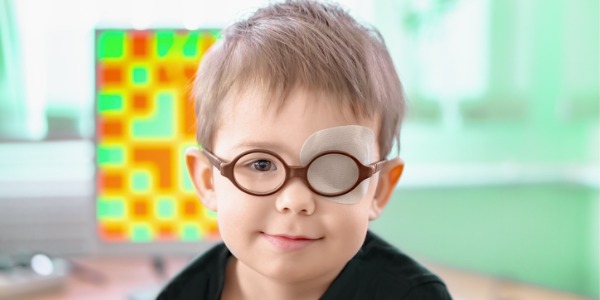What is an Orthoptist?
An orthoptist focuses on diagnosing and treating disorders associated with eye movement and binocular vision. Trained in orthoptics, a field within ophthalmology, orthoptists primarily work with patients experiencing issues such as strabismus (misalignment of the eyes), amblyopia (lazy eye), and other eye movement disorders. Their expertise lies in evaluating and managing these conditions, often through non-surgical interventions.
Orthoptists collaborate closely with ophthalmologists and optometrists, contributing valuable insights to the overall eye care team. In cases where surgical intervention is necessary, orthoptists may assist in pre-operative and post-operative care, playing a significant role in optimizing visual outcomes for their patients.
What does an Orthoptist do?

Duties and Responsibilities
Orthoptists have a unique set of duties and responsibilities focused on the diagnosis and treatment of disorders related to eye movement and binocular vision. Here are key aspects of their roles:
- Diagnostic Assessments: Conduct thorough diagnostic assessments to evaluate eye movement, coordination, and binocular vision. Use specialized tests and equipment to diagnose conditions such as strabismus (eye misalignment) and amblyopia (lazy eye).
- Patient Evaluation: Assess patients' visual acuity, eye alignment, and depth perception. Examine the overall function of the eyes and identify any abnormalities or irregularities in vision.
- Treatment Planning: Develop individualized treatment plans based on diagnostic findings. Determine appropriate interventions, which may include therapeutic exercises, eye patches, prism lenses, or other non-surgical measures to address eye coordination issues.
- Vision Therapy: Administer and oversee vision therapy sessions, guiding patients through exercises and activities designed to improve eye coordination, focus, and visual processing skills.
- Prescription of Corrective Measures: Prescribe and fit corrective lenses, prisms, or other optical devices to help correct and manage vision issues. Monitor the effectiveness of prescribed measures and make adjustments as needed.
- Collaboration with Eye Care Team: Collaborate closely with ophthalmologists, optometrists, and other eye care professionals to ensure comprehensive patient care. Provide valuable insights and contribute to treatment plans in a multidisciplinary setting.
- Pediatric Eye Care: Specialize in pediatric eye care, working with children to diagnose and address developmental vision issues. Implement interventions that promote visual development and prevent long-term vision problems.
- Pre-operative and Post-operative Care: Assist in the pre-operative and post-operative care of patients undergoing eye surgeries, particularly those related to strabismus correction. Coordinate with surgeons to optimize visual outcomes.
- Patient Education: Educate patients and their families about their eye conditions, treatment options, and the importance of compliance with prescribed therapies. Provide guidance on at-home exercises and activities to support ongoing vision improvement.
- Recordkeeping and Documentation: Maintain detailed and accurate patient records, documenting assessments, treatment plans, and progress notes. Ensure compliance with healthcare regulations and standards.
- Continuous Professional Development: Stay updated on advancements in orthoptics, vision science, and related fields through continuous education. Attend conferences, workshops, and training sessions to enhance knowledge and skills.
Types of Orthoptists
Here are some potential areas of emphasis or contexts in which orthoptists may work:
- Pediatric Orthoptists: Some orthoptists specialize in pediatric eye care, focusing on the assessment and treatment of vision disorders in children. They play an important role in early intervention to address developmental issues that may affect visual function.
- Adult Orthoptists: Orthoptists working primarily with adults may address a range of eye movement disorders, binocular vision issues, and conditions that can affect visual function in the adult population.
- Strabismus Specialists: Orthoptists may specialize in the diagnosis and management of strabismus, a condition characterized by misalignment of the eyes. They work to correct eye alignment issues through various therapeutic interventions.
- Amblyopia Specialists: Some orthoptists may focus on amblyopia, commonly known as lazy eye. They implement treatment plans to improve vision in the weaker eye and enhance overall visual function.
- Binocular Vision Therapists: Orthoptists specializing in binocular vision therapy may focus on improving coordination between the two eyes, depth perception, and overall visual integration.
Orthoptists have distinct personalities. Think you might match up? Take the free career test to find out if orthoptist is one of your top career matches. Take the free test now Learn more about the career test
What is the workplace of an Orthoptist like?
Orthoptists commonly work in hospitals, eye clinics, and private ophthalmology or optometry practices. These settings provide a clinical atmosphere where orthoptists collaborate closely with ophthalmologists, optometrists, and other eye care professionals to deliver comprehensive patient care.
In hospital settings, orthoptists may be part of larger eye care teams, contributing their expertise to address conditions such as strabismus and amblyopia. They play a vital role in the evaluation of patients, working alongside surgeons to optimize treatment plans, especially in cases requiring surgical interventions. The hospital environment offers exposure to a diverse patient population, ranging from pediatric to adult patients, each presenting unique challenges and opportunities for specialized care.
Private ophthalmology and optometry practices also serve as common workplaces for orthoptists. In these settings, orthoptists often engage in both diagnostic assessments and ongoing therapeutic interventions. They work directly with patients, administering tests, prescribing corrective measures, and guiding individuals through vision therapy exercises. Private practices may offer a more personalized patient experience, allowing orthoptists to build long-term relationships with those seeking care for eye movement disorders.
Orthoptists can also find opportunities in academic or research settings, where they may be involved in teaching, training future orthoptists, or conducting research to advance the field. Additionally, orthoptists may choose to work in specialized clinics dedicated to pediatric eye care, rehabilitation, or specific conditions related to binocular vision.
The work environment for orthoptists typically involves a combination of clinical offices, examination rooms, and, in some cases, dedicated therapy spaces. These settings are equipped with specialized diagnostic tools and equipment to assess eye movement, coordination, and visual function. The nature of orthoptic work often involves close collaboration with patients, necessitating effective communication and interpersonal skills to provide quality care.